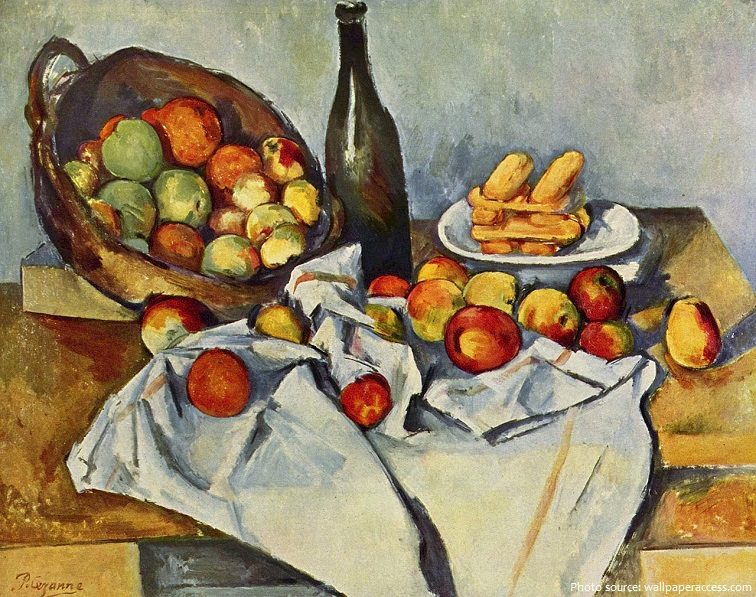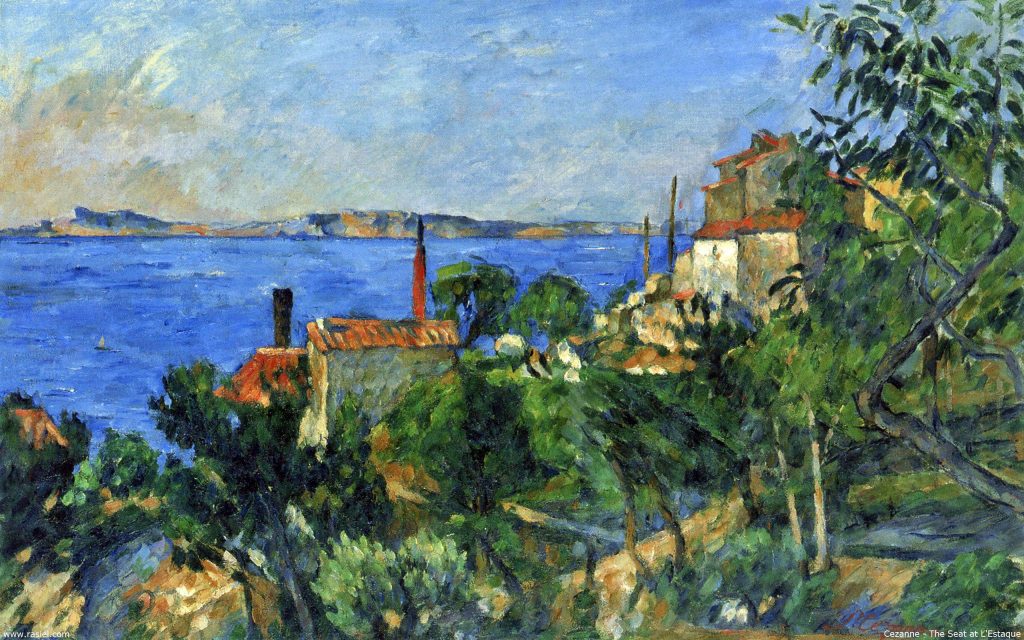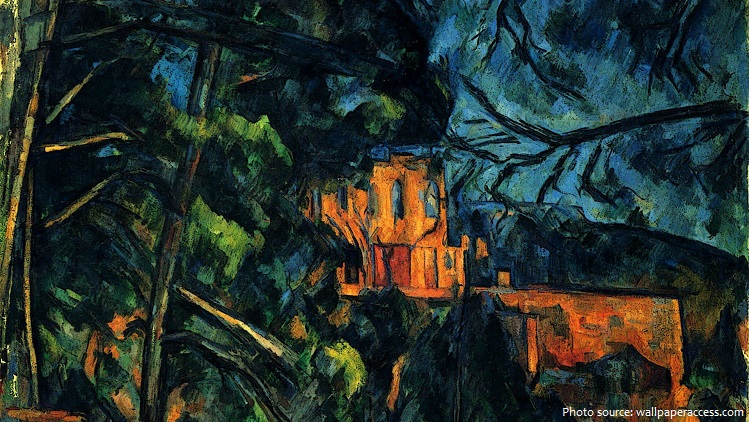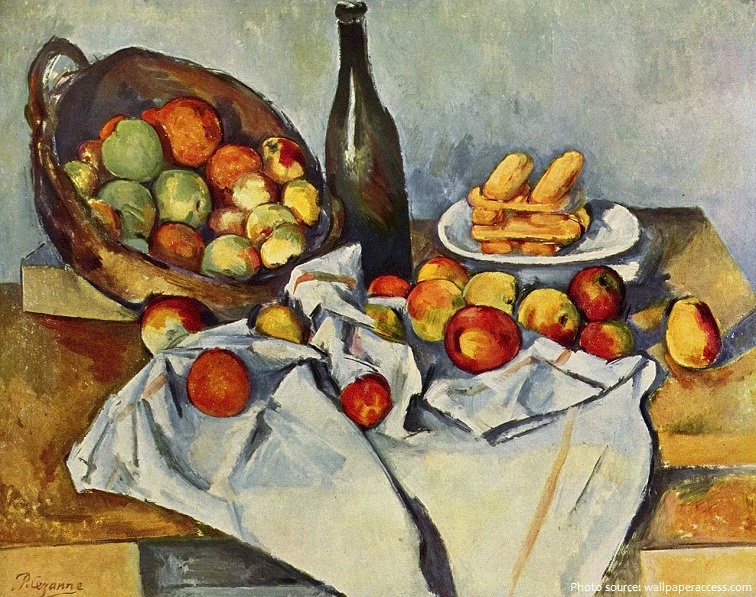
Paul Cézanne was a French artist and Post-Impressionist painter.
Cézanne’s work shows a mastery of design, colour and composition. His brushstrokes are clearly recognizable. He used planes of color and small brushstrokes that build up to form complex fields. The paintings reveal Cézanne’s intense study of his subjects, a searching gaze, and a struggle to deal with the complexity of human visual perception.
The artistic career of Paul Cézanne lasted more than forty years, from roughly 1860 to 1906. A busy artist, he produced more than 900 oil paintings and 400 watercolours, including many incomplete works.
Cézanne’s art, misunderstood and discredited by the public during most of his life, grew out of Impressionism and eventually challenged all the conventional values of painting in the 19th century because of his insistence on personal expression and on the integrity of the painting itself, regardless of subject matter.

His work, along with the work of Vincent van Gogh and Paul Gauguin, laid foundations for the new and radically different world of modern art in the twentieth century.
Cézanne’s work is the bridge between late 19th century Impressionism and the early 20th century Cubism. The line attributed to both Matisse and Picasso that “Cézanne is the father of us all” is significant.
Paul Cézanne was born on 19 January 1839, the son of Louis-Auguste Cézanne, a prominent businessman and banker in Aix-en-Provence.
His mother was Anne-Elizabeth-Honorine Auburt. Paul did well at school and won a prize for painting.
In 1858, under the direction of his father—a successful banker determined to have his son enter the same profession—Cézanne entered the law school of the University of Aix-en-Provence. He had no taste for the law, however, having decided at an early age to pursue some kind of artistic career, and after two years he persuaded his father, with the support of his mother’s entreaties, to allow him to study painting in Paris.

Cézanne quickly established his own style of painting and living. The young artist seems to have been determined to present himself as a poorly-educated country boy, perhaps to make sure more sophisticated artists did not try and dissuade him from the artistic path he wished to take.
In Paris, Cézanne met the Impressionist Camille Pissarro in the mid-1860s. Initially the friendship was that of master and disciple, with Pissarro having an influence on the younger artist. Over the course time their landscape painting trips, in Louveciennes and Pontoise, led to a working relationship between equals.
Cézanne’s paintings were shown in the first exhibition of the Salon des Refusés in 1863, which displayed works not accepted by the jury of the official Paris Salon. The official Salon rejected Cézanne’s submissions every year from 1864 to 1869.

In 1872-3, after the birth of his son, Cezanne settled at Auvers-sur-Oise , near Camille Pissarro who was to prove a considerable influence. The two men spent time painting together. Pissarro introduced him to Impressionism, and his work was exhibited alongside the other Impressionist painters in the now famous 1874 exhibition, held in the studios which the photographer Nadar had just vacated on the 2nd floor of 35 Boulevard des Capucines, and which he kindly lent them.
Although he seemed less technically accomplished than the other impressionists, Cezanne was accepted by the group and exhibited
with them in 1874 and 1877. In general the impressionists did not have much commercial success, and Cezanne’s works received the harshest critical commentary. He drifted away from many of his Parisian contacts during the late 1870s and ’80s and spent much of his time in his native Aix. After 1882, he did not work closely again with Pissarro. In 1886, Cezanne became embittered over what he took to be thinly disguised references to his own failures in one of Zola’s novels. As a result he broke off relations
with his oldest supporter. In the same year, he inherited his father’s wealth and finally, at the age of 47, became financially independent, but socially he remained quite isolated.

One day, Paul was caught in a storm while working in the field. After two hours of being in the rain, he decided it was time to go home. But, he collapsed on the way home, and some stranger saw him and helped him home. The next day, he tried to go outside, but ended up fainting. He was put to bed, and never left it again. Paul Cézanne died of pneumonia on October 22, 1906. He is buried at the old cemetery in his home town, Aix-en-Provence. The year after he died, a large retrospective was shown with all his work in commemoration for the artist.
Cézanne’s The Card Players (1882) is at present the world’s most expensive painting. It was sold for more than $250 million in 2011 to the royal family of Qatar. What makes this all the more remarkable is that there are four other Cézanne ‘Card Players’. They are in the collections of the Metropolitan Museum of Art, the Musée d’Orsay, the Courtauld, and the Barnes Foundation. His best friend was Emile Zola.
